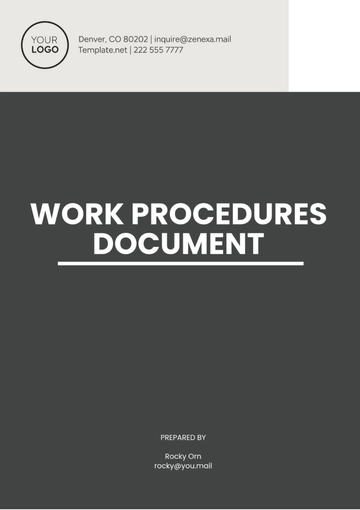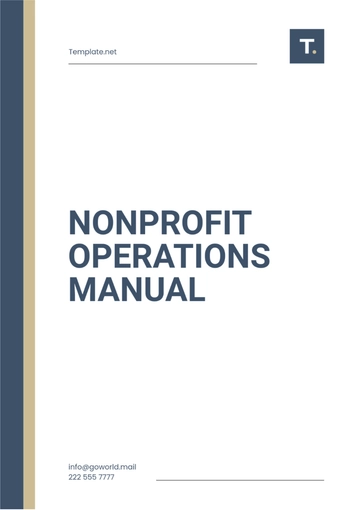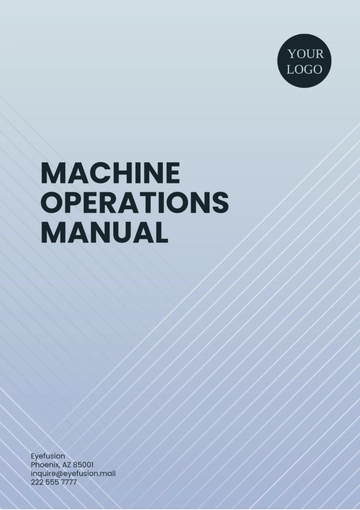Free Finance Employee Payroll Manual

Introduction to Payroll Management
The payroll management system is a critical component of our finance department, integral to ensuring accurate and timely compensation for all employees. This system encompasses a range of activities, including the calculation of wages, withholding of taxes, and the disbursement of employee pay.
The primary objectives of this system are to maintain employee satisfaction through timely and correct salary payment, ensure compliance with various tax laws, and efficiently manage the company’s financial resources. The payroll team is responsible for overseeing these processes, ensuring accuracy in calculations, and staying up-to-date with regulatory changes.
Key Responsibilities of the Payroll Team:
Accurate calculation of wages and deductions.
Timely disbursement of employee pay.
Compliance with tax laws and other financial regulations.
Maintaining detailed and confidential employee records.
Addressing and resolving any payroll-related queries from employees.
Payroll Policy
Our payroll policy is designed to standardize the procedures for compensating employees, ensuring clarity and fairness in the process.
Company Payroll Policy
Employees are compensated either on a bi-weekly or monthly basis. The method of calculation depends on the employee's contract – hourly wages or fixed salaries.
Table: Payment Schedule and Calculation Basis
Employee Type | Payment Schedule | Calculation Basis |
Hourly | Bi-weekly | Number of hours worked × hourly rate |
Salaried | Monthly | Fixed monthly salary |
Pay dates are predetermined at the beginning of each fiscal year. In case a pay date falls on a holiday or weekend, payment is processed on the preceding business day.
Compliance with Legal Requirements
We adhere strictly to all legal requirements in our payroll process. This includes withholding the appropriate taxes from employee wages and ensuring accurate and timely submission to relevant tax authorities.
Key Legal Compliance Areas:
Federal, state, and local tax withholdings.
Social Security and Medicare contributions.
Compliance with minimum wage laws.
Adherence to overtime payment regulations for eligible employees.
Table: Standard Tax Deductions
Deduction Type | Description |
Federal Income Tax | Withheld according to IRS guidelines based on employee’s W-4 form. |
State Income Tax | Varies by state; withheld according to state tax laws. |
Social Security Tax | A fixed percentage as dictated by federal law. |
Medicare Tax | A fixed percentage as per federal guidelines. |
We conduct regular audits to ensure ongoing compliance with these regulations and make adjustments to our payroll system as necessary to accommodate changes in the law.
Employee Information Management
Managing employee information is a fundamental part of the payroll process. It involves the collection, updating, and maintenance of all relevant data that influences payroll calculations.
Collection of Employee Data
At the onset of employment, each employee is required to complete various forms that collect essential data such as personal details, tax information, and bank account details for direct deposit. This data forms the foundation for accurate payroll processing.
Key Forms for Employee Data Collection:
Form Type | Purpose |
W-4 Form | Determines federal tax withholding based on the employee’s filing status and allowances. |
State Tax Withholding Form | For state tax deductions, varying by state. |
Direct Deposit Authorization | Collects bank account details for salary disbursement. |
Personal Information Form | Collects essential personal details like address, contact information, and emergency contacts. |
Confidentiality and Data Protection
Confidentiality and security of employee data are of utmost importance. We implement robust data protection policies to ensure that all personal and financial information is secure and accessible only to authorized personnel.
Data Protection Measures:
Secure storage of physical documents in locked cabinets.
Encryption and password protection for digital records.
Regular audits and updates to security protocols.
Training for all staff members on data privacy and protection.
Payroll Processing
Payroll processing is a systematic procedure carried out each pay period to calculate and distribute employee wages.
Timesheet Submission and Approval
Employees are required to submit their timesheets according to the defined schedule. For hourly employees, these timesheets detail the number of hours worked, including any overtime. Managers are responsible for reviewing and approving these timesheets by the specified deadline to ensure timely payroll processing.
Timesheet Approval Process:
Submission of timesheets by employees by the end of each pay period.
Manager review and approval within two business days.
Timesheet corrections, if necessary, and final approval.
Payroll Calculation
The payroll calculation involves several steps, starting from gross pay calculation to the determination of net pay after deductions.
Payroll Calculation Steps:
Gross Pay Calculation:
For hourly employees: Number of hours worked × hourly rate.
For salaried employees: Fixed salary amount.
Deductions:
Mandatory deductions (taxes, Social Security, Medicare).
Voluntary deductions (retirement plan contributions, health insurance).
Net Pay:
Gross pay minus total deductions.
Example Payroll Calculation Table:
Description | Hourly Employee Example | Salaried Employee Example |
Gross Pay | 80 hours × $20/hr | $4,000/month |
Federal Tax | $320 | $800 |
State Tax | $160 | $400 |
Social Security | $124 | $248 |
Medicare | $29 | $58 |
Net Pay | $2,367 | $2,494 |
Payroll Disbursement
The payroll disbursement process involves the methods and timing of transferring wages to employees. Ensuring a smooth and efficient disbursement process is crucial for maintaining employee satisfaction and trust.
Modes of Payment
Employees are typically offered a choice between different modes of payment, depending on their preference and the company's capabilities.
Direct Deposit: The most common and efficient method, where the salary is electronically transferred to the employee's bank account. This method is secure and ensures that employees receive their pay promptly.
Paper Checks: For employees who prefer traditional methods or do not have bank accounts, paper checks are issued. These are typically mailed to the employee or available for pick-up on payday.
Pay Cards: Pay cards are an alternative for employees without bank accounts. These are prepaid cards that are loaded with the employee's salary each pay period.
Table: Comparison of Payment Modes
Payment Mode | Processing Time | Security | Convenience |
Direct Deposit | 1-2 days | High | High |
Paper Checks | 5-7 days | Moderate | Moderate |
Pay Cards | 1-2 days | High | High |
Pay Stub Information
Every employee receives a pay stub each pay period, regardless of the payment method. The pay stub provides detailed information about their earnings and deductions.
Key Information on Pay Stubs:
Gross earnings.
Deductions (taxes, benefits, other withholdings).
Net earnings.
Year-to-date totals.
Employer contributions (if applicable).
Pay stubs are either attached to paper checks or provided electronically for direct deposit and pay card users.
Year-End Procedures
Year-end payroll procedures are critical for ensuring compliance with tax laws and for providing employees with the necessary documents for their personal tax filings.
W-2 Form Processing
Every employee receives a W-2 form at the end of the year, which summarizes their annual wages and taxes withheld. This form is essential for employees to file their personal tax returns.
W-2 forms are prepared and reviewed for accuracy.
They are distributed to employees by January 31st of the following year, either electronically or via mail.
Year-End Tax Reporting
Year-end tax reporting involves reconciling the payroll records with the taxes withheld and paid over the course of the year. This is essential to ensure compliance with tax laws and to prepare for any audits.
Key Year-End Reporting Tasks:
Reconciliation of payroll records.
Verification of tax payments and filings.
Preparation of reports for government agencies.
Updates to payroll systems for new tax rates and laws for the upcoming year.
Amendments and Updates to Payroll Procedures
Periodic updates and amendments to payroll procedures are essential to ensure compliance with changing laws, technological advancements, and company policies. This section outlines the guidelines for updating payroll procedures and communicating these changes effectively to all stakeholders.
Identifying the Need for Changes
Changes in payroll procedures can be necessitated by various factors:
Legal and Regulatory Changes: Changes in tax laws, labor laws, or other government regulations may require updates to payroll processing.
Company Policy Adjustments: Changes in company-wide policies, benefits, or compensation structures.
Technology Upgrades: Implementation of new payroll software or systems to improve efficiency and accuracy.
Feedback and Suggestions: Input from employees or the payroll team on existing processes and potential improvements.
Process for Implementing Changes
A structured approach is essential for implementing changes effectively:
Assessment and Planning: Evaluate the impact of the proposed changes on existing procedures and prepare a detailed plan for implementation.
Approval and Documentation: Obtain necessary approvals from management. Document the changes in the payroll procedures manual and other relevant documents.
Training and Support: Provide training and support to the payroll team and other relevant staff to ensure a smooth transition to the new procedures.
Testing: Before full implementation, test the changes in a controlled environment to identify and rectify potential issues.
Communication of Changes
Effective communication is key to ensuring that all employees are aware of and understand the changes:
Internal Announcements: Use company communication channels like email, intranet, or staff meetings to announce changes.
Detailed Guidelines: Provide detailed guidelines on what the changes are, why they are being made, and how they will affect the employees.
Availability for Questions: Ensure that the payroll team is available to answer any questions or concerns that employees may have.
Regular Review and Updates
To ensure ongoing compliance and efficiency, a regular review of payroll procedures is recommended. This could be annually or in response to significant changes in the external environment or company operations.
Annual Review Meetings: Conduct annual meetings to review payroll processes and identify areas for improvement.
Continuous Feedback Loop: Encourage continuous feedback from employees and the payroll team to identify issues and potential improvements.
- 100% Customizable, free editor
- Access 1 Million+ Templates, photo’s & graphics
- Download or share as a template
- Click and replace photos, graphics, text, backgrounds
- Resize, crop, AI write & more
- Access advanced editor
Simplify payroll understanding for your team with the Finance Employee Payroll Manual Template from Template.net. This editable, customizable manual provides detailed guidance on payroll processes. Essential for HR and finance teams, it explains procedures for salary calculation, deductions, and benefits, ensuring clarity and consistency in payroll administration.





























